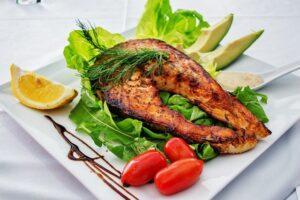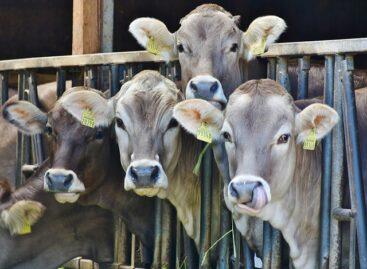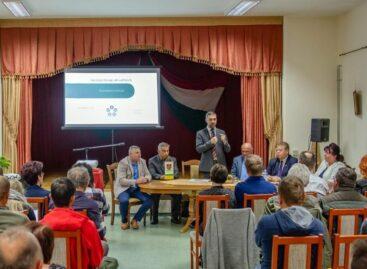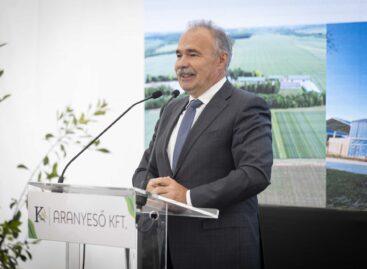Christmas fish may be cheaper this year
According to a survey by Agroinform.hu, 80 percent of families eat fish on Christmas Eve.

(Photo: Pixabay)
As a result of more favorable conditions than last year, producers were able to reduce the price of fish products by 10-12 percent this year, so if the commercial chains apply this discount in their prices, families will be able to get festive fish cheaper this year. According to the Agroinform.hu survey, fish will be present on the Christmas table of 80 percent of the population this year as well.
The significant drop in feed prices and the wetter weather than last year had a positive effect on the operation of domestic fish farms
Although the costs of labor and energy carriers continued to rise this year, producers can sell fish to traders 10-12 percent cheaper than last year – and this price reduction is expected to be reflected in consumer prices as well. Accordingly, the price of live carp will be between HUF 1,800-2,200 per kilogram, and sliced carp will cost HUF 3,500-4,000. Traders will ask for an amount of around HUF 4,000 for a fillet of African catfish, while the price of a kilo of filleted gray catfish may vary between HUF 7,500-8,000 this season. Dr. István Németh, the president of the Hungarian Aquaculture and Fisheries Association (Mahal), told Agroinform.hu that the supply of carp, which accounts for about 80 percent of domestic fish production, more than covers the domestic demand during the Christmas season, and is also exported to the domestic market. from it. Although it is growing slowly, per capita fish consumption is still very low in international comparison, 6.5-7 kilograms, more than a third of which is still concentrated during the Christmas season. The expert said that it is not worth waiting until the last moment, from the first days of December you can already buy the Christmas fish – freezing for a few weeks does not cause a deterioration in the quality of the fish.
What kind of fish is on the table?
According to a survey of the portal’s readers, 85 percent of those who eat fish at Christmas process carp, but 32 percent also buy catfish for the Christmas menu. African catfish are also on sale at this time (13%), and busa and salmon (11-11%) also sell well. Fish juice is mainly made from fish – in 81 percent of cases – but fried fish is also very popular (65%). 15 percent of families eat grilled or grilled fish at this time. Most people buy fish for Christmas at the market, at a permanent or occasional fish stand (40%), or in supermarkets (30%). In addition, an important source of purchase is your own or a friend’s fishing catch (17%). Another significant source is the Christmas menu service of restaurants (10%), which is also used by more and more people every year. 41 percent of those who took part in the survey indicated that they eat fish less often than monthly. 37 percent of the respondents indicated the high price as the reason for omitting fish from their diet, 24 percent mentioned the difficulty of obtaining quality fish, while 21 percent indicated family habits as the main reason.
Fish producers are still not in an easy situation
In Hungary, pond farms operate on more than 25,000 hectares of water. The situation of domestic fish producers was fundamentally improved this year by the fact that, after last year’s extreme drought, sufficient rainfall this year ensured adequate water supply to the fish ponds. In 2023, feed cost about 30 percent less overall than in the months following the outbreak of the Russian-Ukrainian war last year.
At the same time, Dr. István Németh, the president of the Mahal, drew attention to several additional problems:
- The sector suffers from a serious labor shortage, and many sub-activities cannot be replaced by technological development.
- Ecologically protected predators – especially cormorants – cause increasing damage.
Keeping them at bay can currently be solved by warning methods, the price of the warning ammunition causes additional costs of millions for each larger fish farm on an annual basis
- Although the Hungarian Fish Farming Operative Program Plusz (MAHOP Plusz), which supports the sector, now includes area-based support, its amount is only half (30-35 thousand forints per hectare) of the amount typical for arable land.
The expert added: the resources of MAHOP Plusz will still represent a major step forward for the sector, which can be expected to primarily result in the gradual renewal of production capacities, the development of the equipment park, the launch of environmental protection investments and the establishment of new fish ponds.
Related news
New subsidies help animal breeders
The Ministry of Agriculture is supporting the sustainability of domestic…
Read more >With rising grain prices, it is not worth sitting on stocks
Cereal prices are rising on the European futures markets, so…
Read more >The value-creating developments in agriculture are implemented one after the other
In addition to creating a favorable regulatory environment, it is…
Read more >Related news
BH AgrárTrend Index: the outlook for the Hungarian food industry has stabilized
The assessment of the situation of the actors of the…
Read more >Shrink inflation is getting worse
Dishwashing detergent, sweets, sour cream, cottage cheese, kefir and camembert…
Read more >NGM: innovation means the future of the food industry, State Secretary Gergely Fábián handed over new developments
In the framework of the Food Supplier Development Program (ÉLIP…
Read more >







